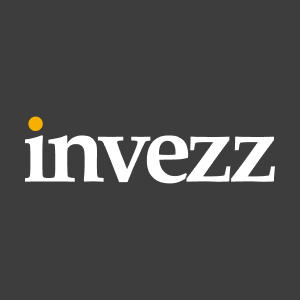Rising Open Interest and Negative Funding Point to Growing Short Pressure in Select Altcoins
4 min read
A recent change in the derivatives landscape is bringing a possibly bearish altcoin setup to light. Why? Because open interest is rising—and it’s now being paired with negative funding rates. These two together signal that not only is the market being forced to short, but also that the shorts are being put on with some serious size. And when you open a short in the types of products that really give you the edge in crypto , you’re kind of signaling to the market that you expect prices to go down. On this front, several assets are raising red flags, with Zcash ($ZEC) being the most prominent case. It is a privacy coin that is now under suspicion and has been flagged by multiple sources as possibly non-compliant with SEC regulations. Some other tokens, like $NEO, $FET, and $AIOT, are also starting to show the early signs of compliance issues. These assets moving in a certain non-compliant direction could serve as the directional impetus for any spots and derivatives to now also make a non-compliant move. Zcash Leads the Pack in Bearish Sentiment Zcash ($ZEC) currently stands out as the asset with the most extreme divergence between rising leverage and bearish positioning. Over the past 24 hours, open interest on ZEC futures has surged by 35.5%, a significant uptick that typically indicates increased trader engagement. However, this rise in leverage is occurring alongside a deeply negative funding rate of -0.17% — the most negative across the observed assets. Several assets are seeing rising open interest paired with negative funding – suggesting a concentration of short positioning despite increasing leverage: $ZEC: OI +35.5%, Funding -0.17% pic.twitter.com/Qz1Zlen535 — glassnode (@glassnode) April 9, 2025 Funding rates show the cost of holding long versus short positions in the perpetual futures market. When the rate is negative, it means that the short traders are paying the long traders; in other words, most traders in the market are shorting the asset. ZEC saw a very large increase in OI, or open interest, over the past week. At the same time, the funding rate is sharply negative and getting more so, which suggests that traders in this market are very aggressively building short positions. This dynamic can create a feedback loop in thin or illiquid markets. When a lot of traders are going short, even small negative price movements can lead to more unwinding of positions, which means that we could see a downside move that is faster than what we might expect in a normal market condition. But we could also see a fast, upside reversal if sentiment changes to the bullish side or if selling pressure just dries up. NEO and FET: Rising Leverage, Flat Price Action Though ZEC’s situation is the most extreme, $NEO and $FET are also showing signs of potential directional stress. NEO’s open interest has jumped 47.8%, the largest increase in this group by far. Despite this increase, however, price action for NEO has remained stagnant and even slightly bearish, which suggests that this increase in OI is not a function of bullish longs driving the price higher, but rather an influx of shorts driving the price lower. NEO’s funding rate has dipped into negative territory at -0.045%, which supports the notion that most recent traders are shorting the asset. Open interest is also up for FET (Fetch.ai). However, since the funding rate is also at -0.045%, any recent price moves that have possibly occurred for FET should not be credited with shoring up the asset’s funding rate. Yet another slow day for FET shows it is not earning strength from traders who are willing to bet on a price increase. Both assets may be at heightened risk of volatility for two reasons: -Traders may start unwinding short positions in both assets if they begin to move up in price. -Even if traders maintain short positions, they could be at risk of having those positions move against them if some market catalyst leads to a decline in the prices of the safe-haven assets they’re using as proxies. AIOT: Falling OI and Mildly Bearish Funding Interestingly, not all assets are seeing rising leverage. Open interest for AIOT has dropped a considerable 25.1%, and still AIOT has a mildly negative funding rate of -0.060%. Given that this is a funding rate that’s not actually that crazy in the negative, it suggests, to me at least, that traders are decreasing risk as they get ready for whatever is coming next in AIOT. While the funding stays negative, the mix of declining open interest and a relatively small amount of money suggests that bearish pressure is either dissipating or that traders are still too tentative to re-short the market aggressively. Conclusion: Market Poised for Volatility Data taken together depicts a picture of a derivatives market that is increasingly one-sided, at least in the short term. Open interest across multiple assets is rising. But when you pair that with funding rates that are down across the board, it suggests that the market is betting on a downward movement. Yet, when markets become too one-sided, they become fragile. With so many traders packed into short positions, the risk of a short squeeze — a sudden, sharp upward move that forces shorts to close — also increases. And the more we crowd into our safe spaces, the bigger and more violent the resultant move when the inevitable unwind occurs. These setups should be watched closely by traders. They are closely correlated to many of the setups we just discussed. Trading them means you think either current sentiment is about to continue or that a violent reversal is in the works. Disclosure: This is not trading or investment advice. Always do your research before buying any cryptocurrency or investing in any services. Follow us on Twitter @nulltxnews to stay updated with the latest Crypto, NFT, AI, Cybersecurity, Distributed Computing, and Metaverse news !

Source: NullTx



